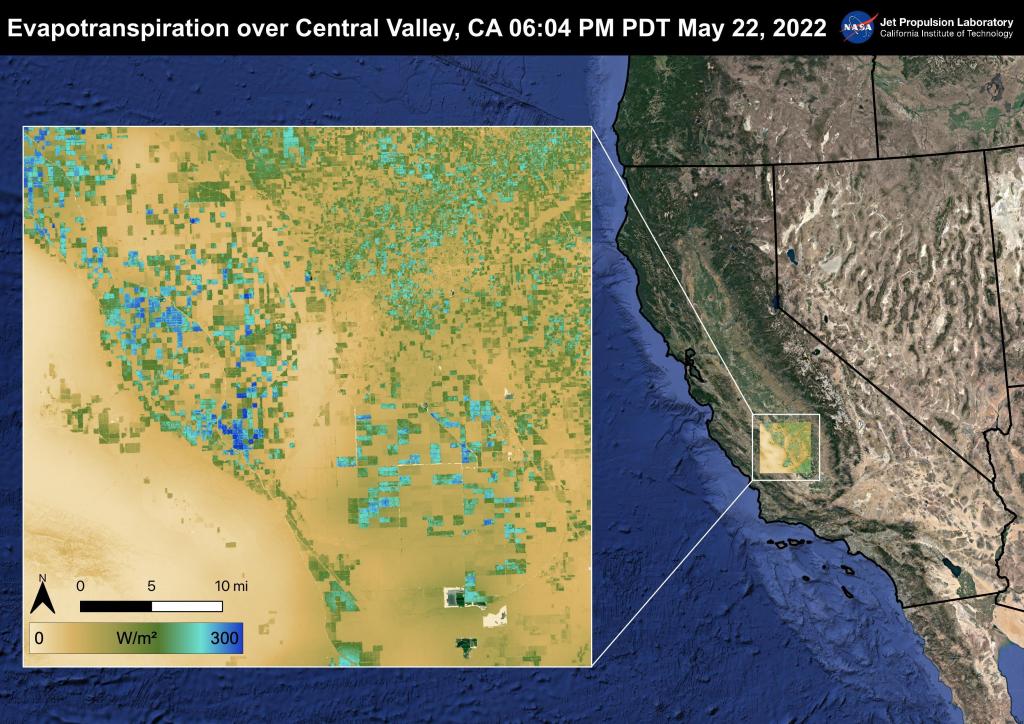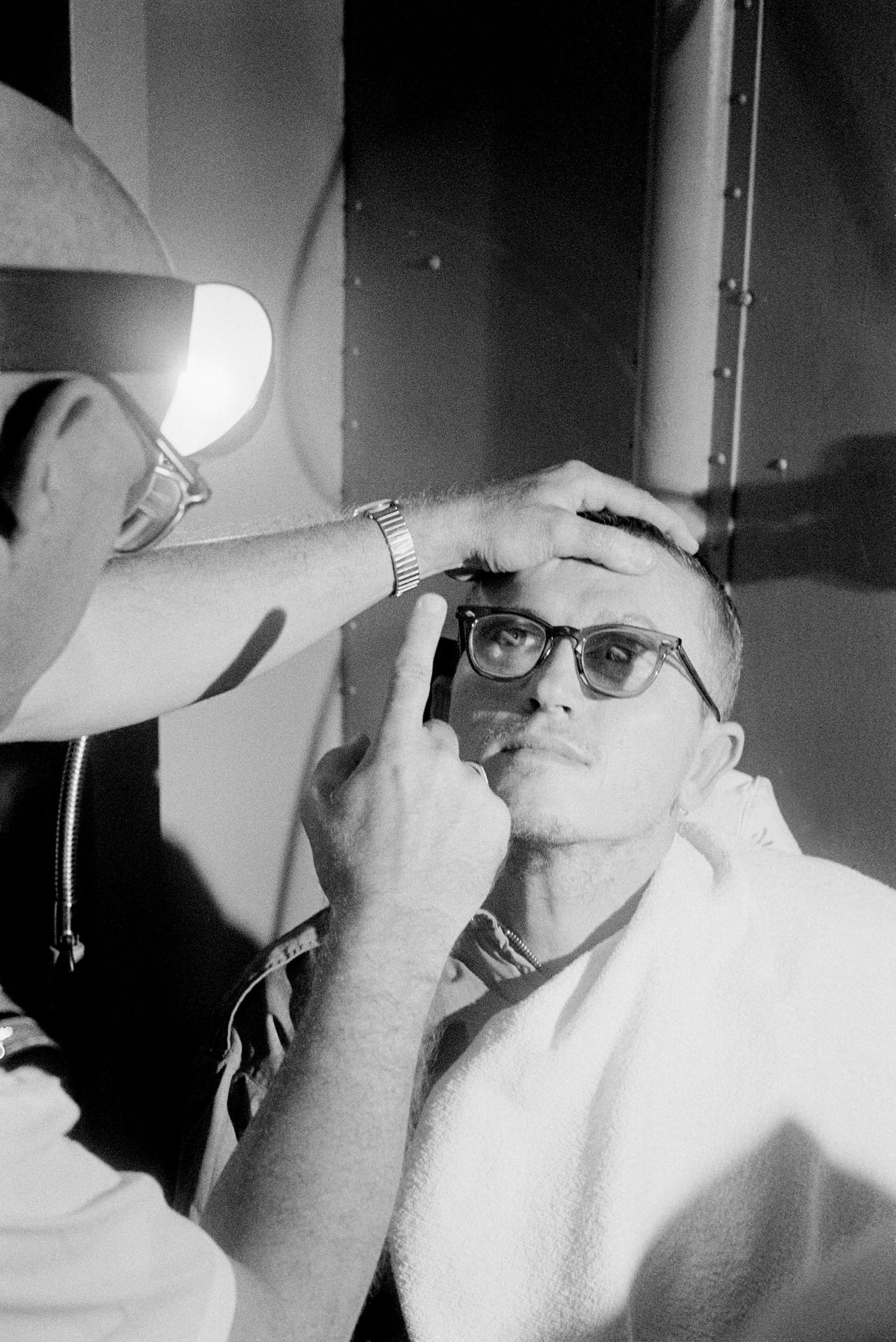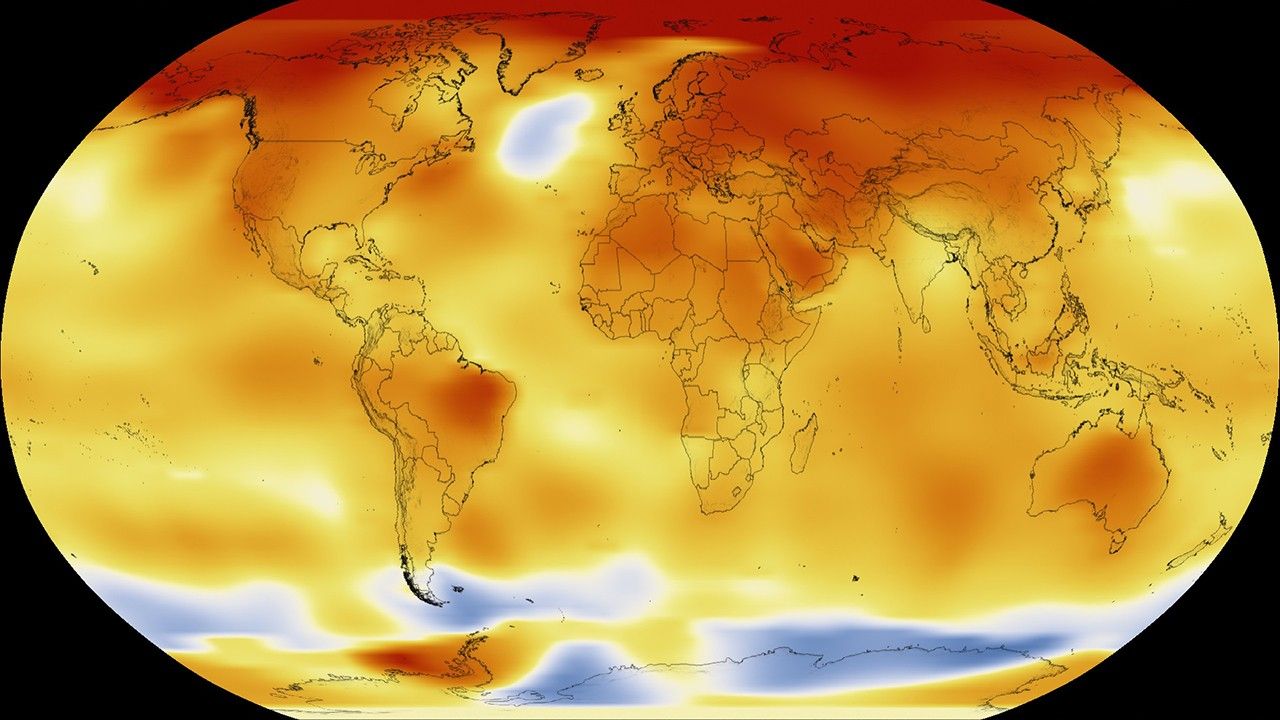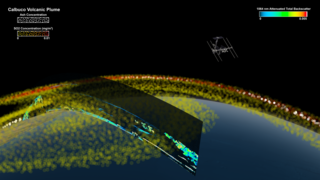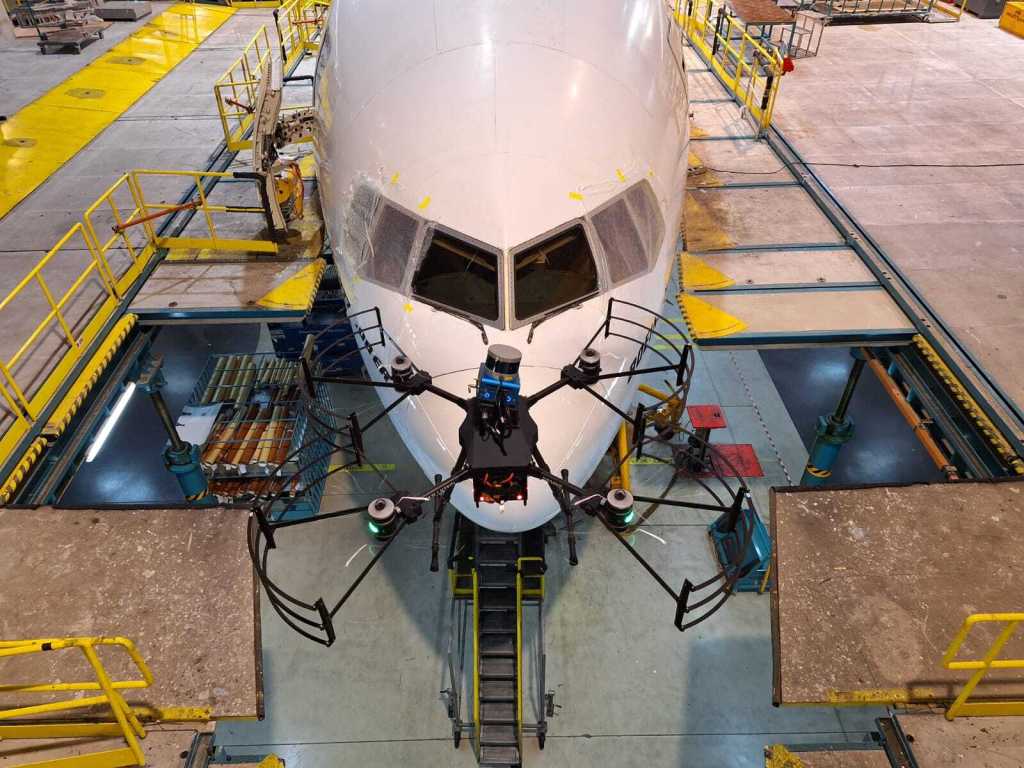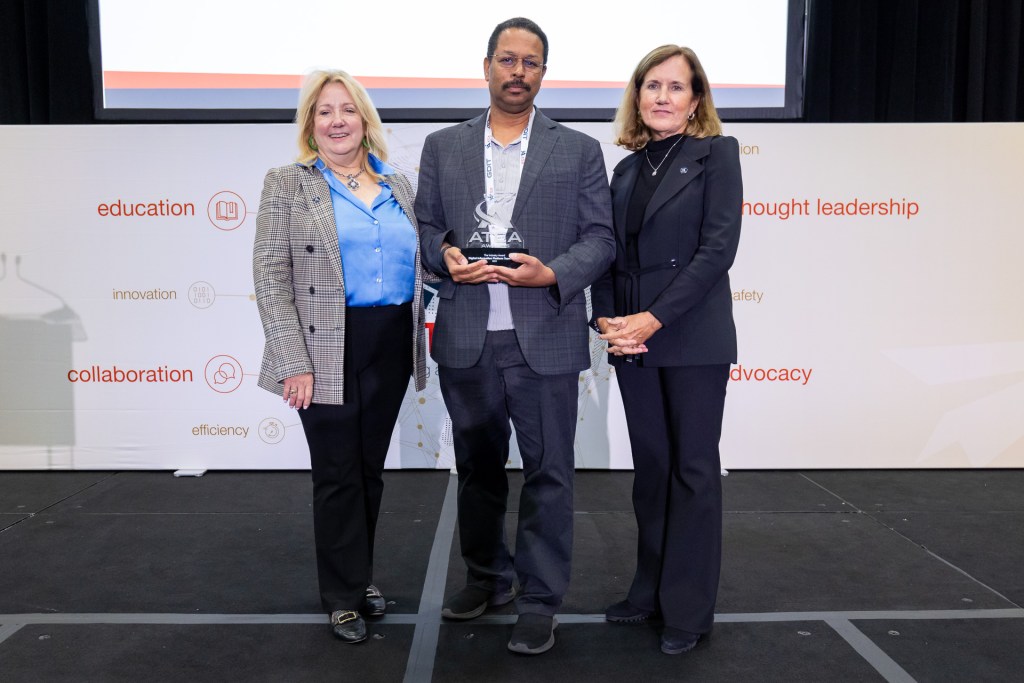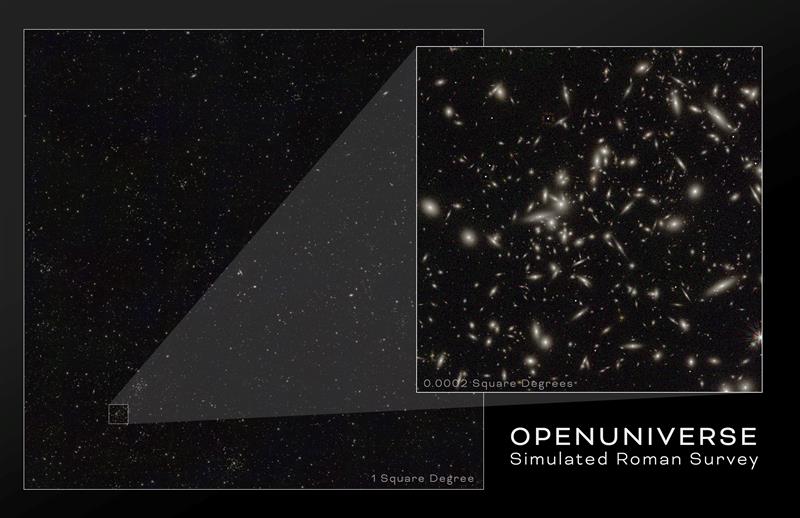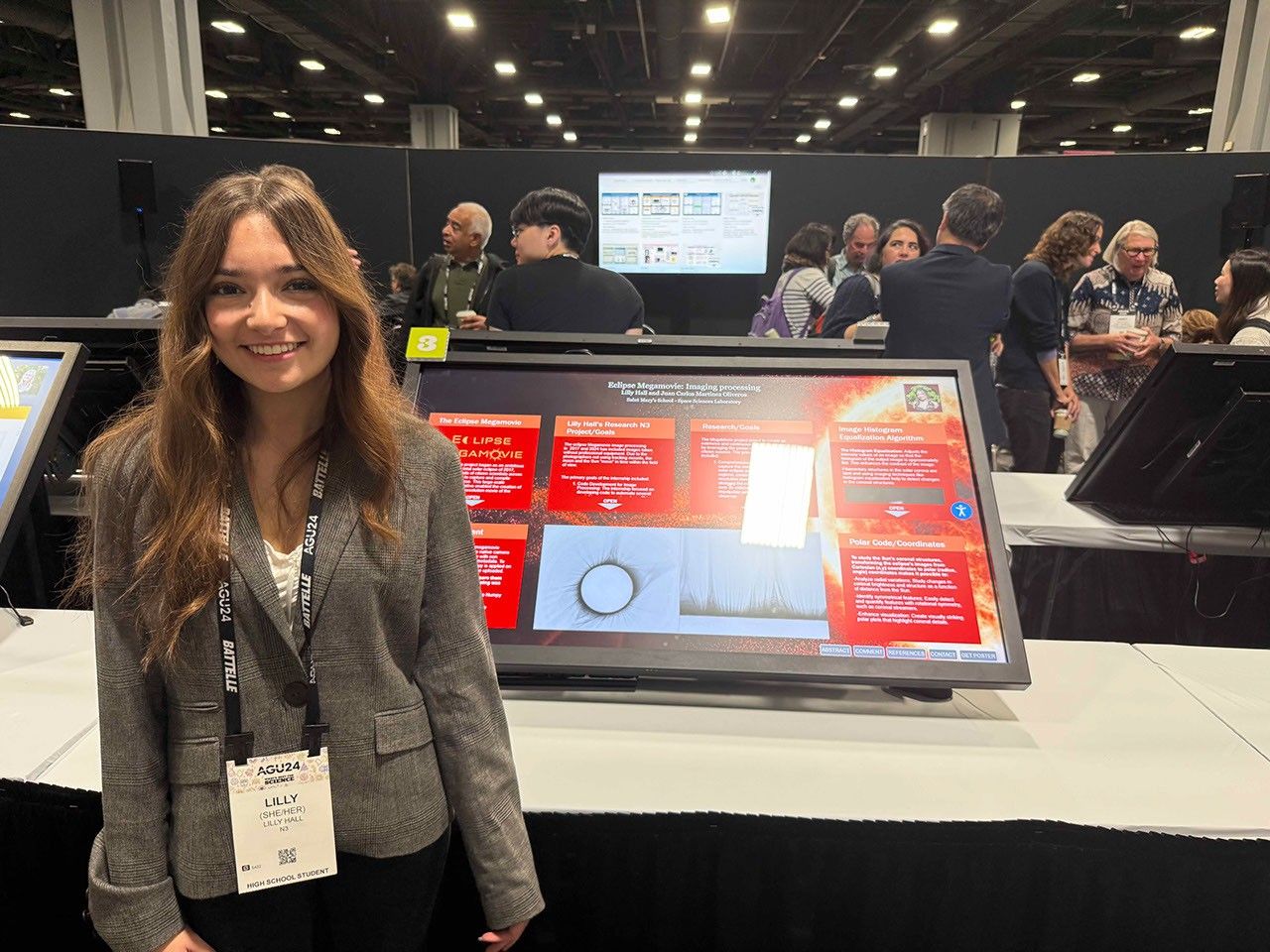After completing the historic first international docking in space and two days of crew visits between the two vehicles, the Soviet and American spacecraft of the Apollo-Soyuz Test Project (ASTP) continued their independent flights after undocking. Soviet cosmonauts Aleksei A. Leonov and Valeri N. Kubasov remained in space for two days after the conclusion of the joint activities, landing in Soviet Kazakhstan. Apollo astronauts Thomas P. Stafford, Vance D. Brand, and Donald K. “Deke” Slayton stayed in orbit for five days after undocking. With the expected lengthy hiatus in American crewed space flights until the first flight of the Space Shuttle, then expected in 1979, scientists were eager to take advantage of Apollo’s ability to stay in orbit for a few extra days, so the crew continued to perform a suite of joint and independent science experiments. They splashed down in the Pacific Ocean on July 24, 1975, and not without some final drama.

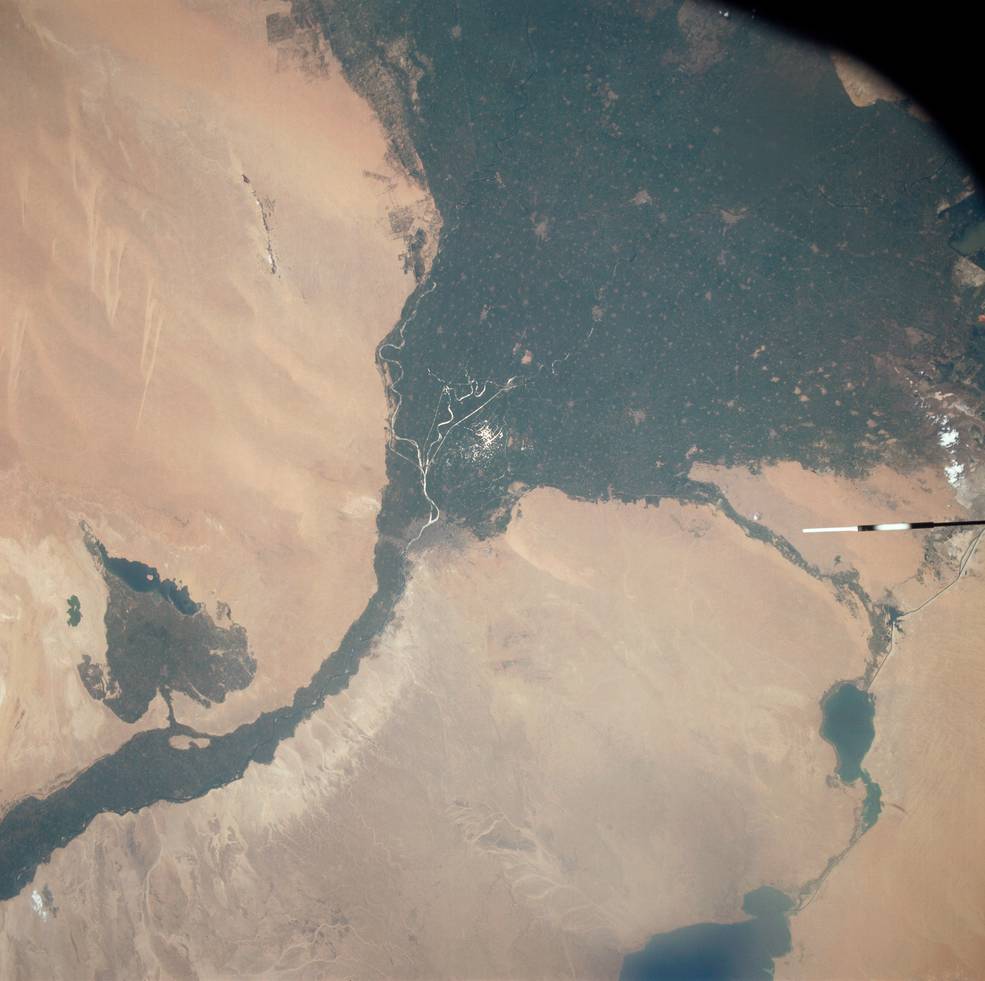
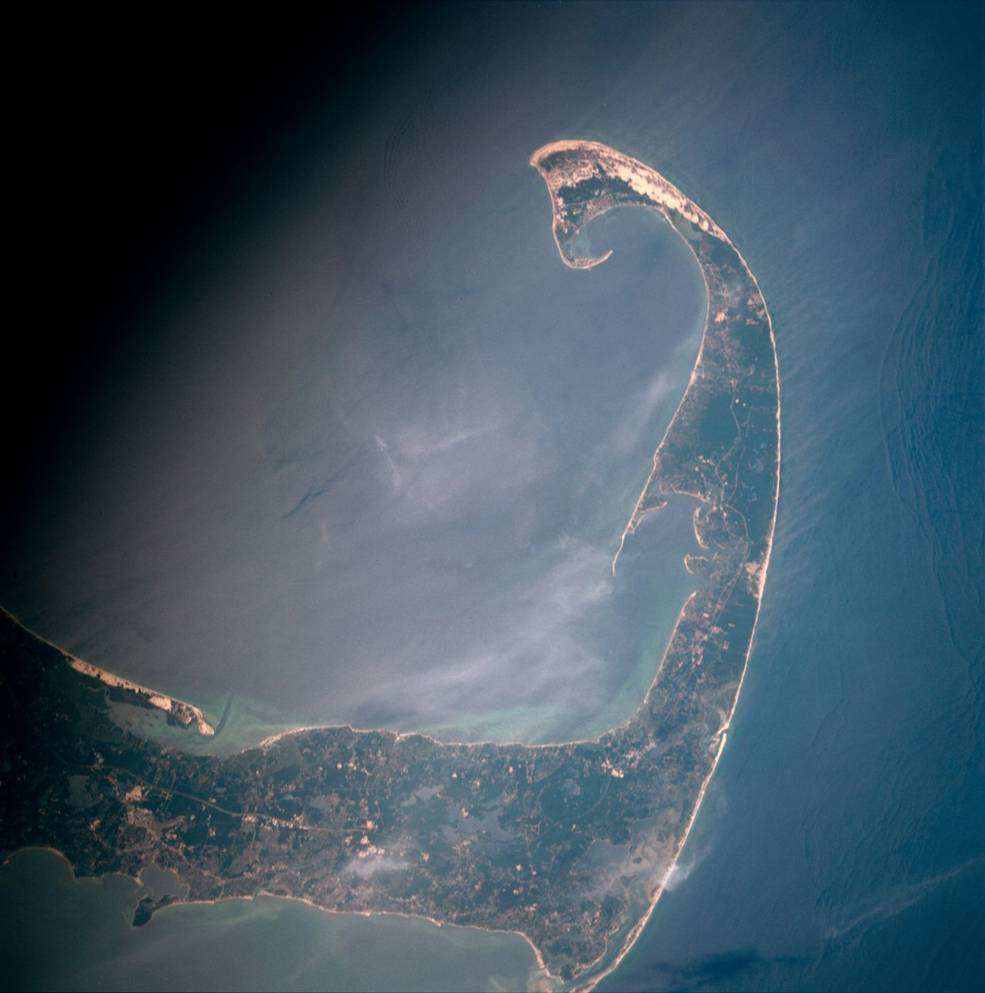
Three Earth observation photographs taken by the ASTP Apollo crew.
Left: The greater Los Angeles area. Middle: The Nile Delta including Cairo in Egypt.
Right: Cape Cod, Massachusetts.
On July 20, 1975, the day after undocking from Soyuz, Stafford, Brand, and Slayton conducted several of the 23 planned independent experiments including placing samples in a materials processing furnace, tending to a protein crystal growth study, making ultraviolet observations, and taking photographs of selected targets on Earth. Capsule Communicator (Capcom) Robert L. Crippen reminded them of the sixth anniversary of the first Moon landing, with Stafford quipping, “Roger. Remember it well.” The next day, Mission Control informed them that Leonov and Kubasov had made a successful landing and were reported to be in good health. On July 23, Stafford, Brand, and Slayton conducted the final news conference of the mission and then donned their spacesuits, closed the hatches between the Command Module (CM) and the Docking Module (DM), vented the tunnel between the two and jettisoned the DM. As the two objects separated to a distance of 200 miles, the astronauts conducted a Doppler experiment to detect any possible gravitational anomalies perturbing the orbits of the two craft. The DM burned up on reentry into the Earth’s atmosphere on Aug. 2, 1975.
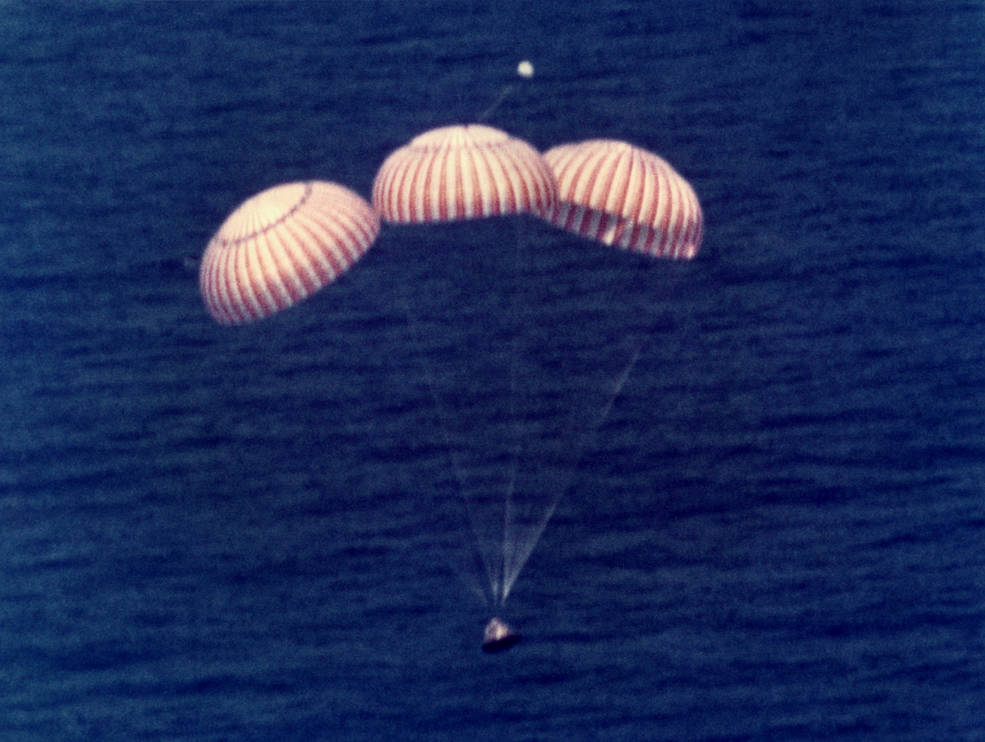
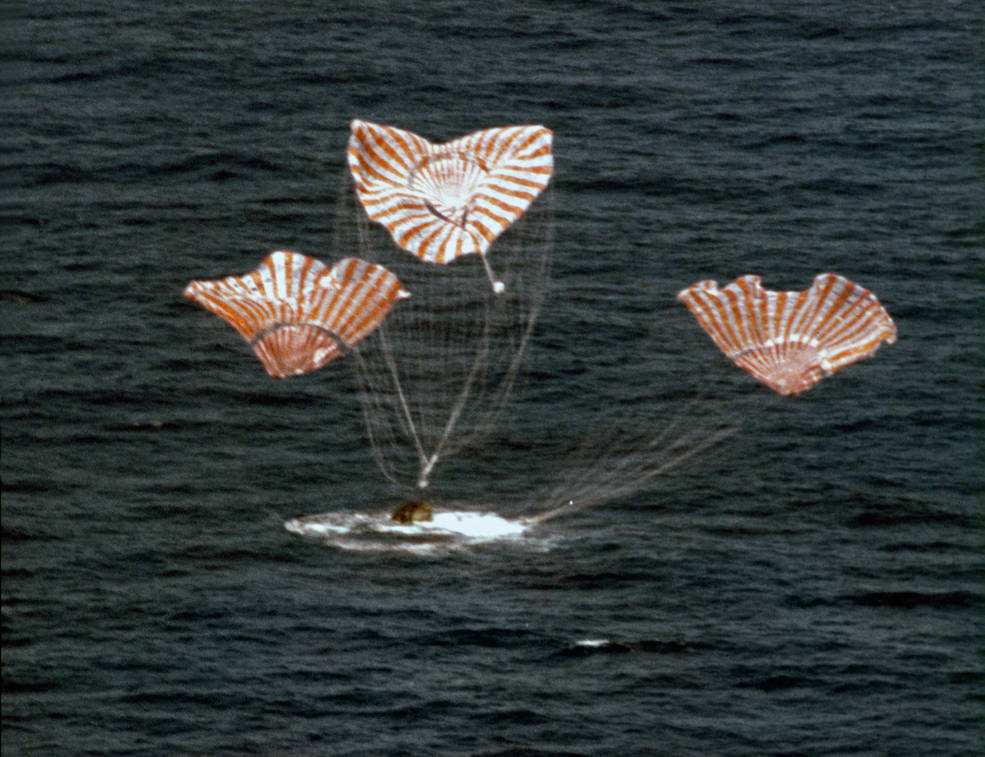
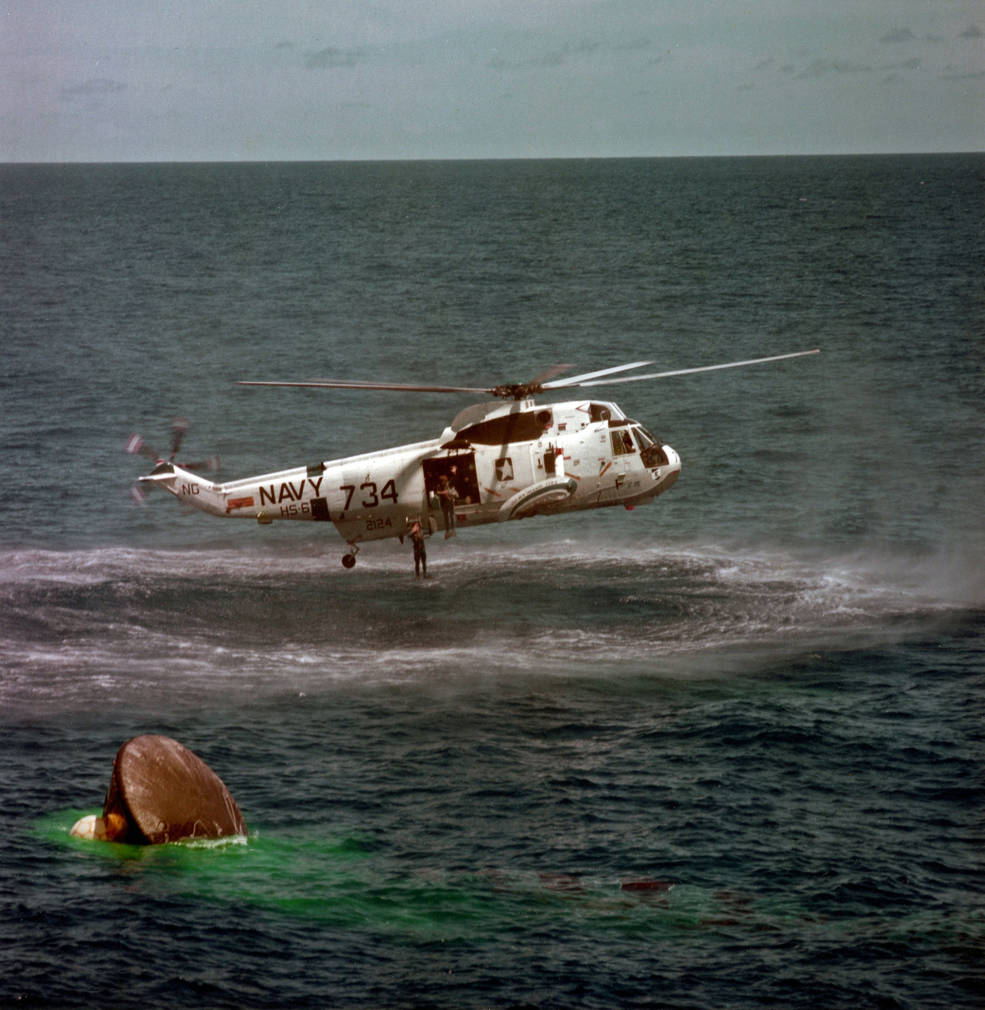
Left: Apollo descending under its three main parachutes. Middle: The moment of splashdown.
Right: Rescue swimmers about to hit the water, with the Apollo capsule still in the Stable 2 position.
On July 24, the astronauts prepared to come home. After stowing all loose equipment, they fired the Service Propulsion System engine to slow their velocity enough to bring them out of orbit and then jettisoned the Service Module. With the CM’s heat shield facing in the direction of travel, the spacecraft encountered the first traces of the Earth’s atmosphere at about 400,000 feet and began slowing down, the astronauts experiencing about three times the force of gravity from the rapid deceleration. Three drogue parachutes opened at 24,000 feet to begin slowing the spacecraft’s descent, followed by the three main parachutes at 10,000 feet. Splashdown occurred after a flight time of 217 hours and 28 minutes less than one mile from the target point northwest of Hawaii and within sight of the prime recovery ship USS New Orleans (LPH-11). The capsule assumed the Stable 2, or apex down position, but three self-inflating balloons righted the spacecraft within minutes. The astronauts remained inside the capsule until hoisted aboard New Orleans. During the welcoming ceremony, it became apparent that they were not feeling well, and it was then that the astronauts revealed that they had inhaled some nitrogen tetroxide propellant during the descent. Normally, the crew would have turned off the CM’s thrusters once descending on the parachutes but that was not done and the gas had been drawn into the cabin through a valve normally open to allow fresh air to enter. All further ceremonies were cancelled and the crew taken to the ship’s sick bay.
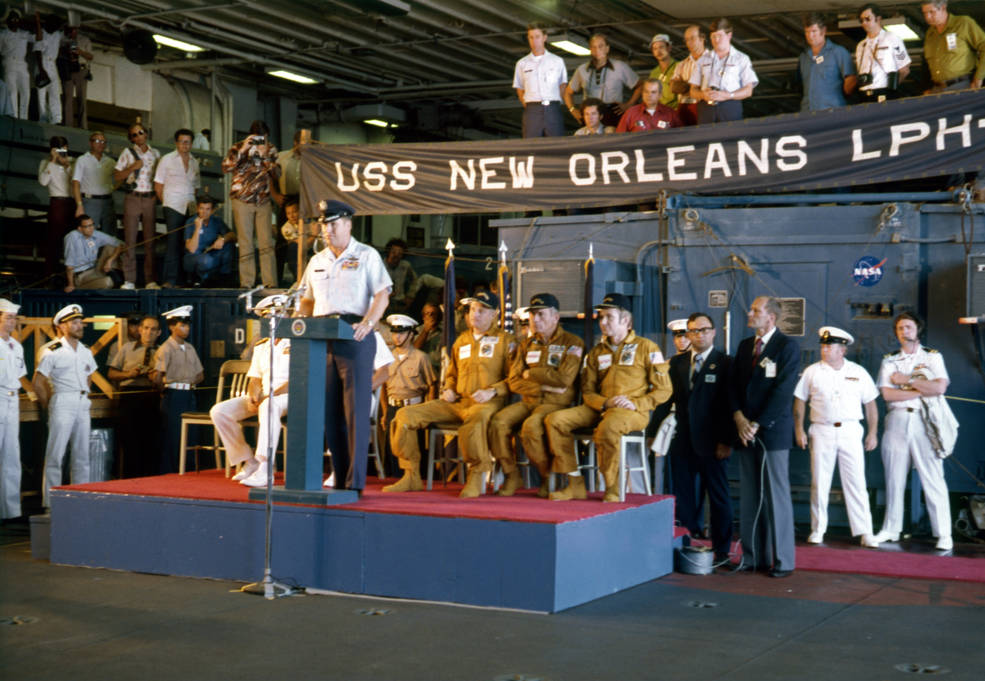
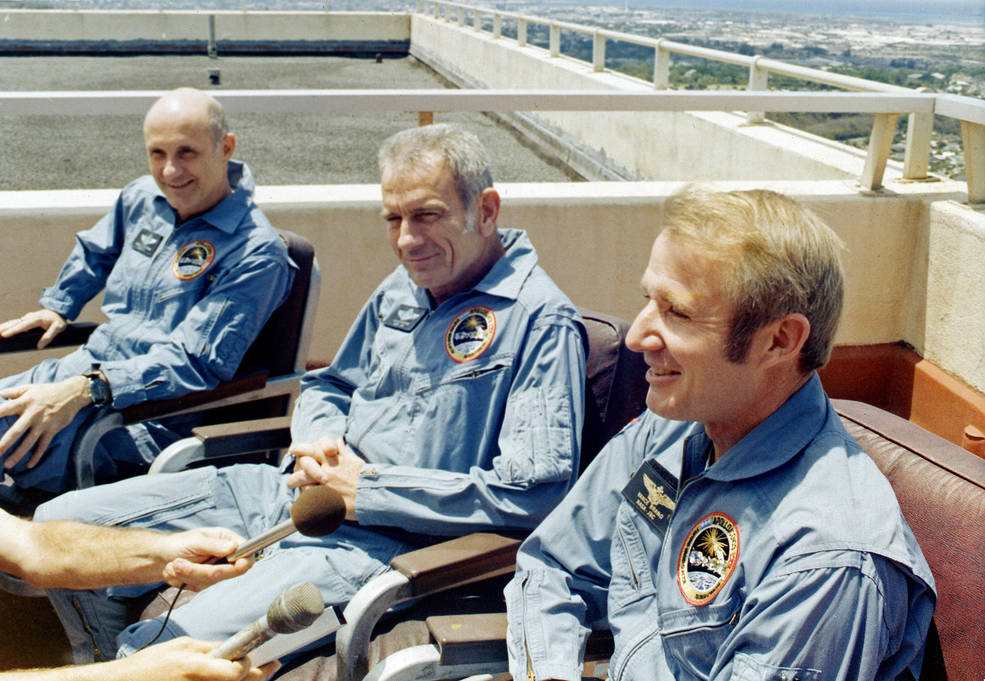
Left: Welcome reception for the Apollo astronauts aboard USS New Orleans.
Right: Apollo astronauts (left to right) Stafford, Slayton, and Brand
recuperating at Tripler.
The incident caused the astronauts to remain inside the carrier’s sick bay until it arrived at Pearl Harbor in Hawaii. X-rays showed the astronauts’ lungs filled with fluid as if they had pneumonia. After arriving in Honolulu, the astronauts were taken to the medical facility at Tripler Army Hospital. By July 30, the astronauts had sufficiently recovered to relocate to a resort at the Marine Corps Air Station at Kenoe Bay for further recuperation.
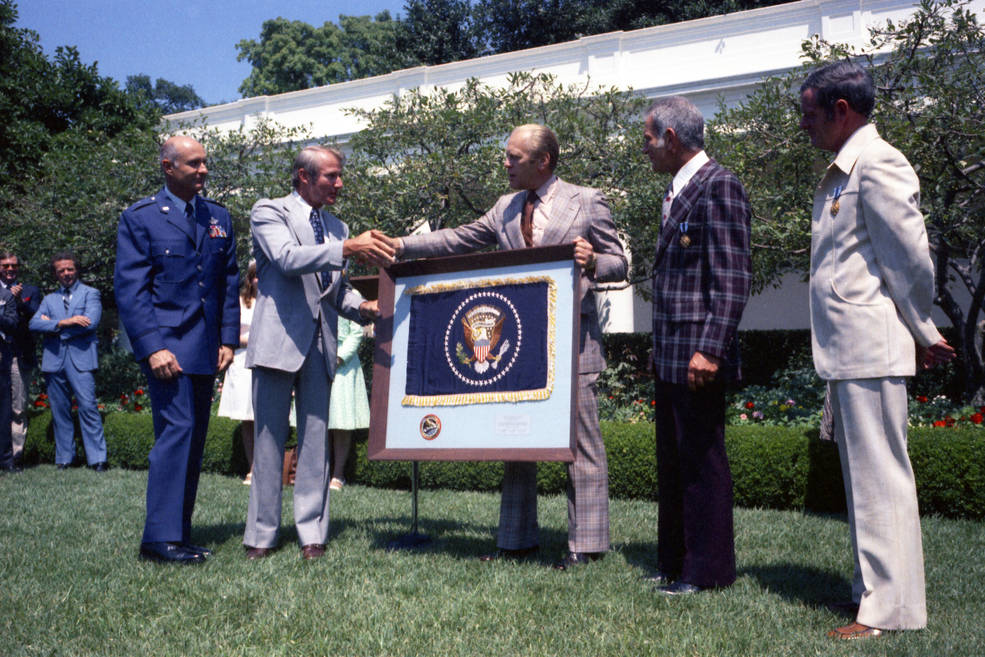
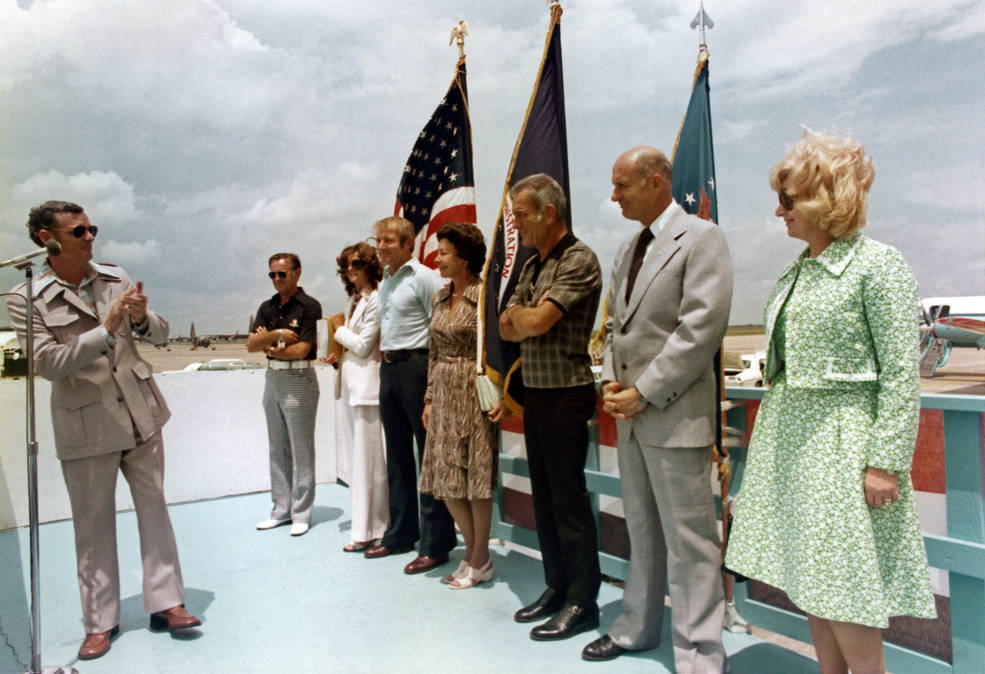
Left: President Ford hosts the Apollo astronauts in the White House Rose Garden.
Right: Apollo astronauts with their wives after arriving back at Ellington AFB.
From Hawaii the astronauts flew to Washington, DC, where on Aug. 9 they held their first post-mission press conference and President Gerald R. Ford received them in the White House’s Rose Garden. He presented each astronaut with a Distinguished Service Medal and promoted Stafford to Major General. They finally returned home to Houston on Aug. 10, met by a large crowd at Ellington Air Force Base (AFB) near the Johnson Space Center. During the astronauts’ hospital stay, doctors noticed a spot on Slayton’s chest X-ray, and after his return to Houston he underwent exploratory surgery – fortunately the mass turned out to be benign. Slayton recovered in time to join his crewmates on the postflight goodwill tours of the Soviet Union and the United States in September and October.
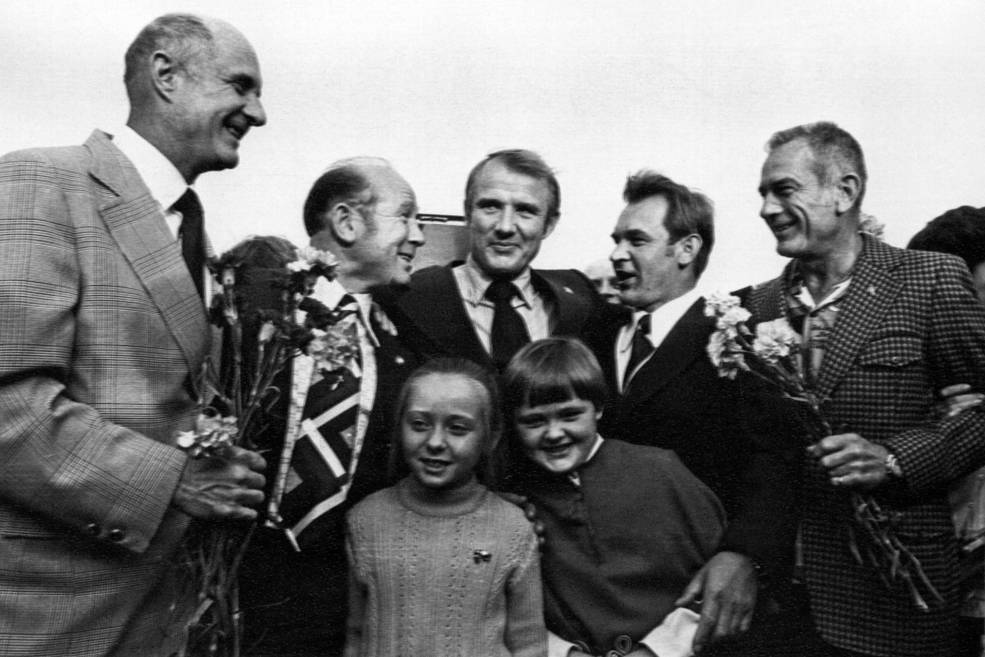
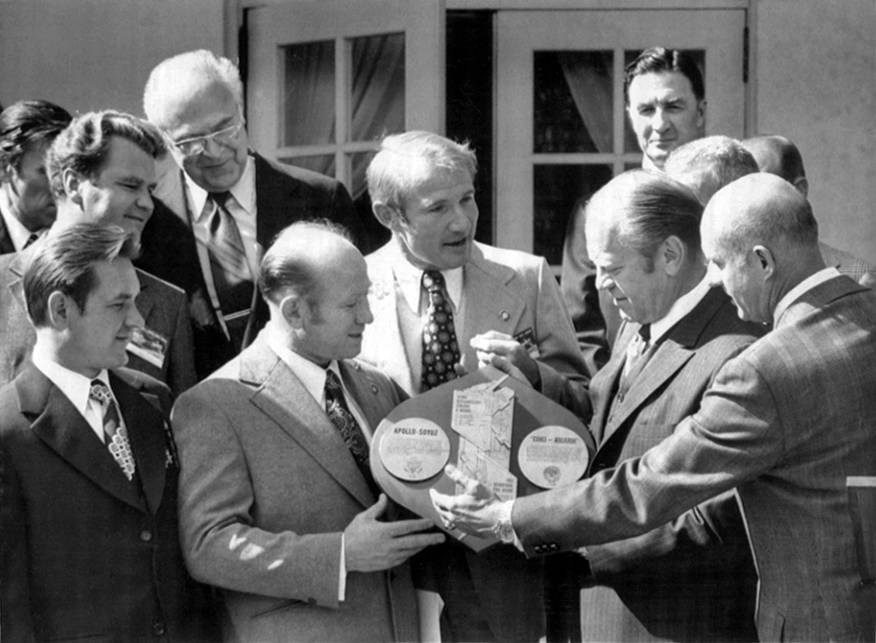
Left: ASTP crewmembers (left to right) Stafford, Leonov, Brand, Kubasov, and
Slayton in Moscow during the tour of the Soviet Union. Right: ASTP crewmembers
with President Ford at the White House during the tour of the United States.
On Sep. 20, Stafford, Brand, and Slayton, accompanied by their wives, arrived in Moscow for a two-week tour of the Soviet Union. Along with ASTP cosmonauts Leonov and Kubasov they visited Moscow, including a trip to the Cosmonaut Training Center in Star City where they laid a wreath at the tomb of Yuri A. Gagarin, the first man in space, Leningrad (now St. Petersburg), Kiev, Volgograd (formerly Stalingrad), Novosibirsk in Siberia, Tblisi in Soviet Georgia and finally the resort town of Sochi on the Black Sea. On Oct. 12, Leonov and Kubasov arrived in the United States, and accompanied by the Apollo astronauts, began their American tour in Washington, DC, where President Ford received them in the White House. They next visited Chicago, taking part in a motorcade with Mayor Richard J. Dailey. Then it was on to Omaha, Salt Lake City, San Francisco, Reno, and Lake Tahoe. During their next stop in Los Angeles, the five crewmembers visited the Rockwell International plant in Downey and were briefly reunited with the Apollo spacecraft from their mission. After a brief stop back in Washington they visited Atlanta and Nashville and finished the two-week tour at the United Nations in New York.
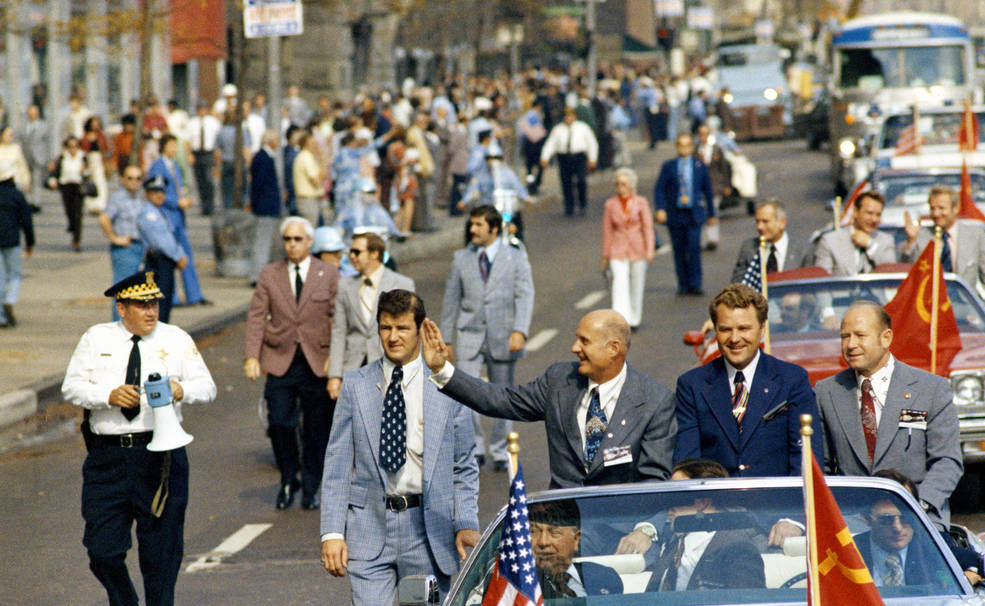
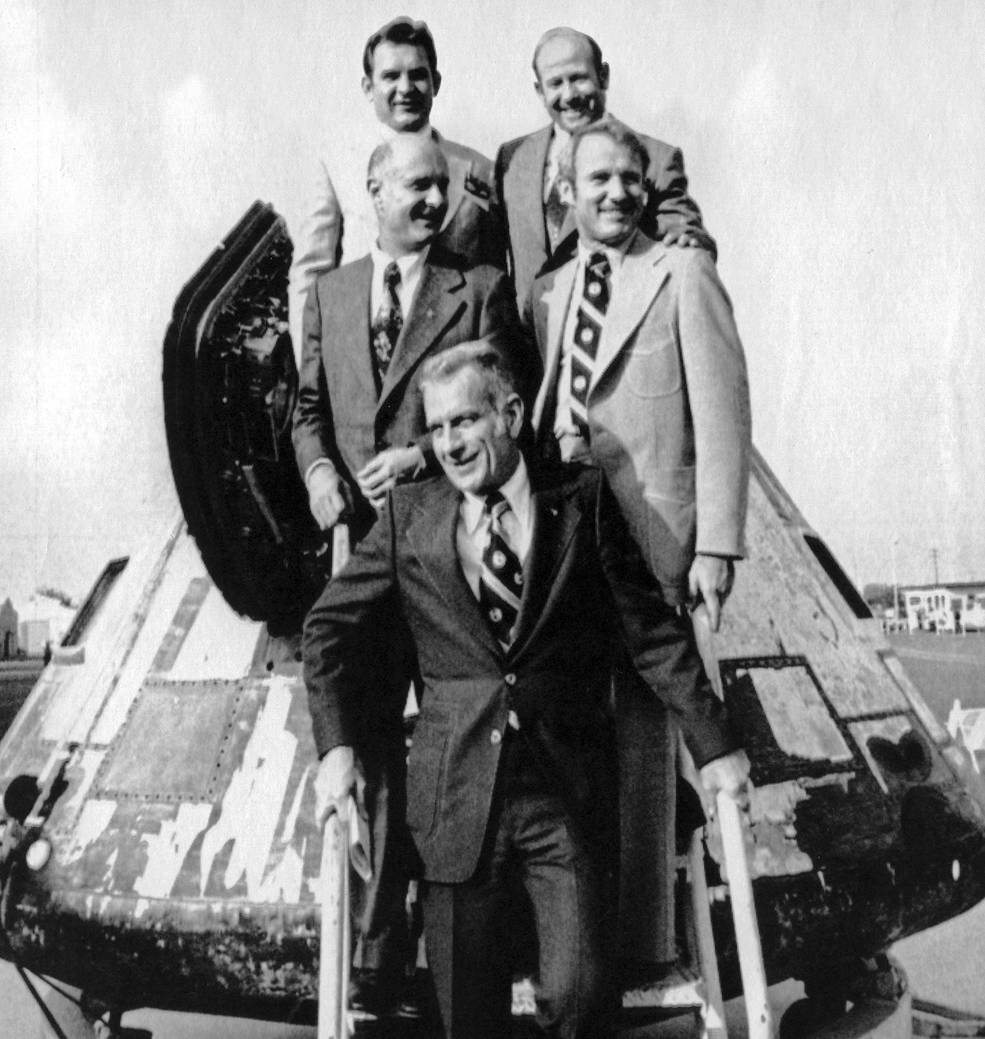
Left: Apollo and Soyuz crewmembers on parade in Chicago with Mayor Dailey.
Right: ASTP crewmembers pose with the Apollo Command Module from their mission.
Due to the deterioration of relations between the United States and the Soviet Union in the late 1970s, no follow-on missions to ASTP took place. A backup Apollo spacecraft and Saturn IB rocket were available and there were some discussions of possibly flying an Apollo to a Soviet Salyut space station, but with no government support Soviet-American space cooperation for many years remained limited. Following the fall of the Soviet Union in 1991, both sides expressed renewed interest in renewing collaboration, leading to agreements to fly a cosmonaut aboard the Space Shuttle, an astronaut aboard the Mir Space Station, and for a docking between the Shuttle and Mir. The latter required a common docking mechanism, and the Russians developed a derivative of the ASTP system for use in what became known as the Shuttle-Mir Program. With the inclusion in 1993 of Russia as a partner in the International Space Station, designers adopted essentially the same joint docking apparatus. After a lengthy hiatus, many of the working relationships between engineers and scientists developed for ASTP were renewed for these newer programs.
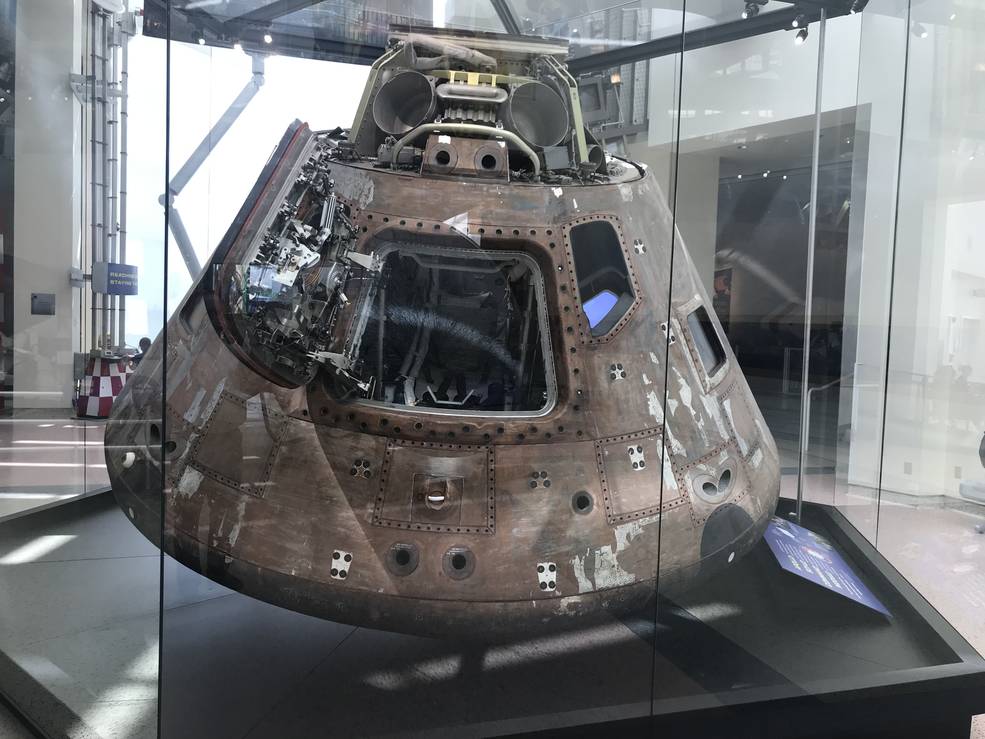
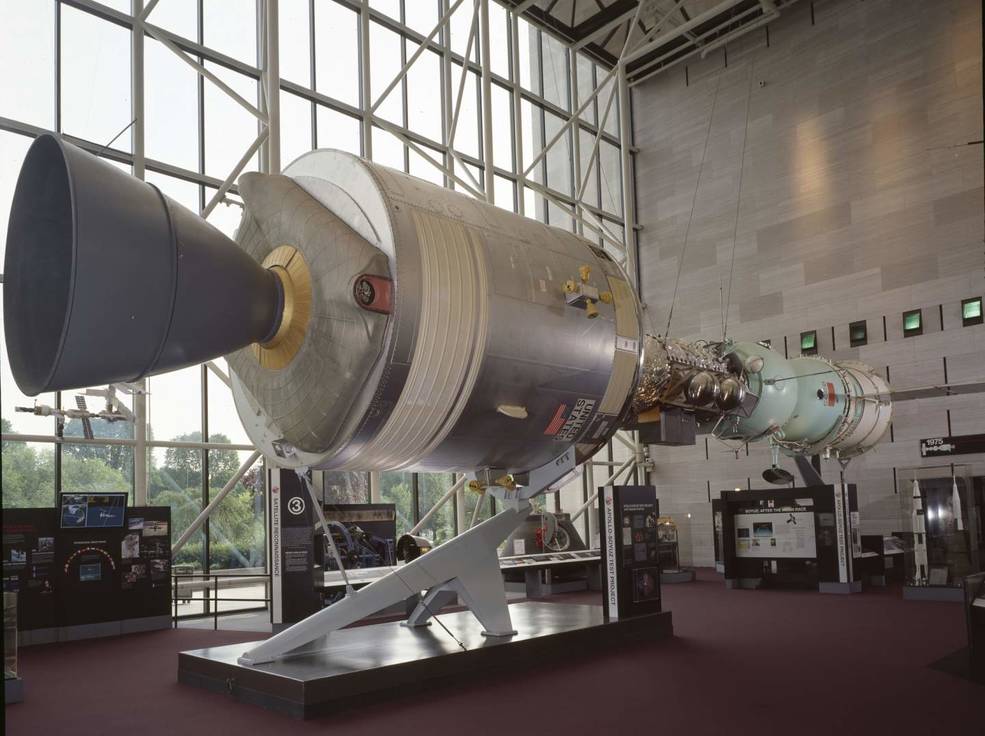
Left: ASTP Apollo Command Module on display at the California Science Center.
Right: Display of the docked ASTP Apollo and Soyuz spacecraft at NASM.
The ASTP Apollo CM is on display at the California Science Center in Los Angeles. The docked Apollo and Soyuz spacecraft is on display at the Smithsonian Institution’s National Air and Space Museum (NASM) in Washington, DC, comprised of Apollo CM-105 that was used in acoustic tests in 1968, the flight backup DM, and a mockup of a Soyuz spacecraft.






